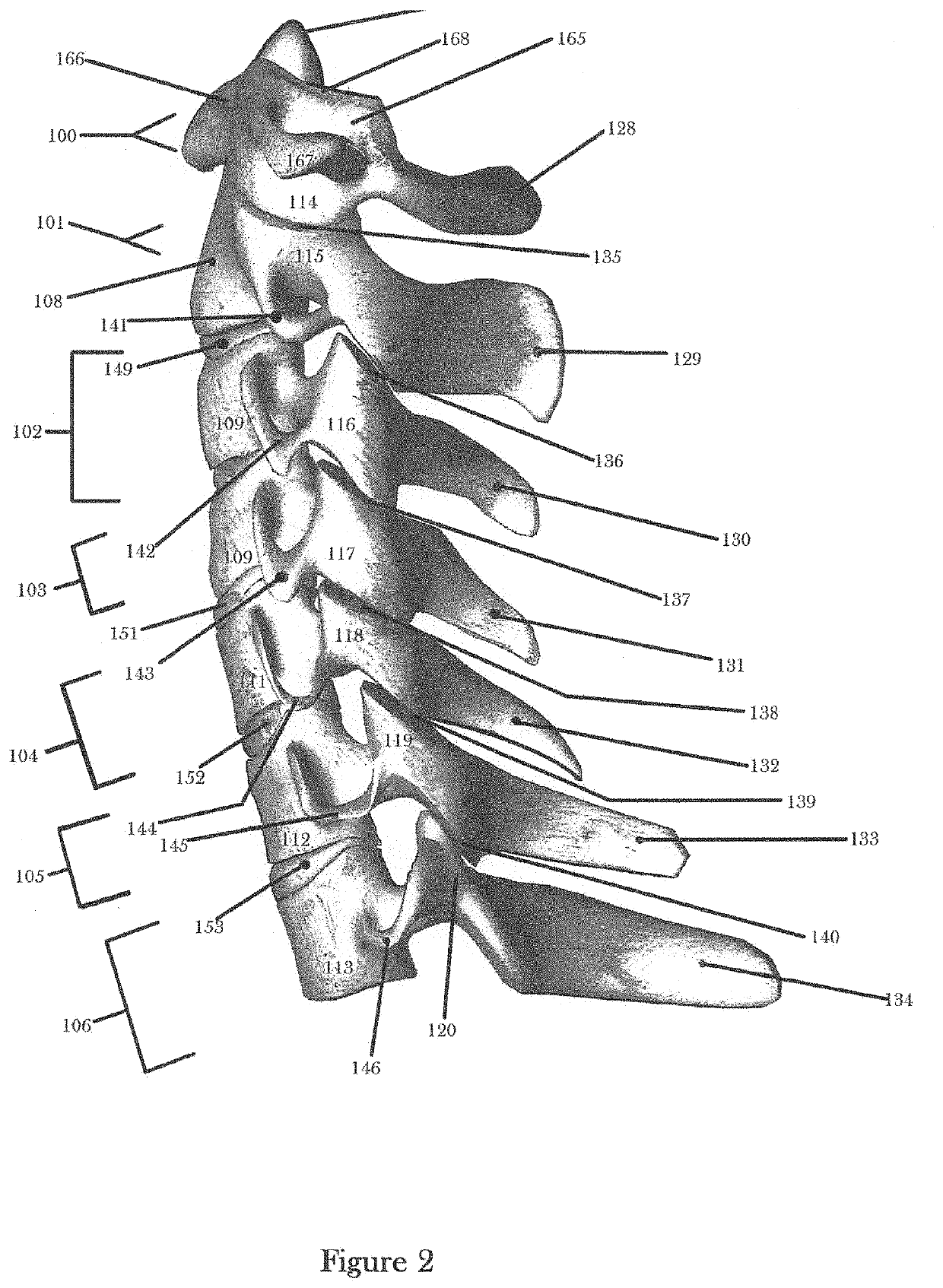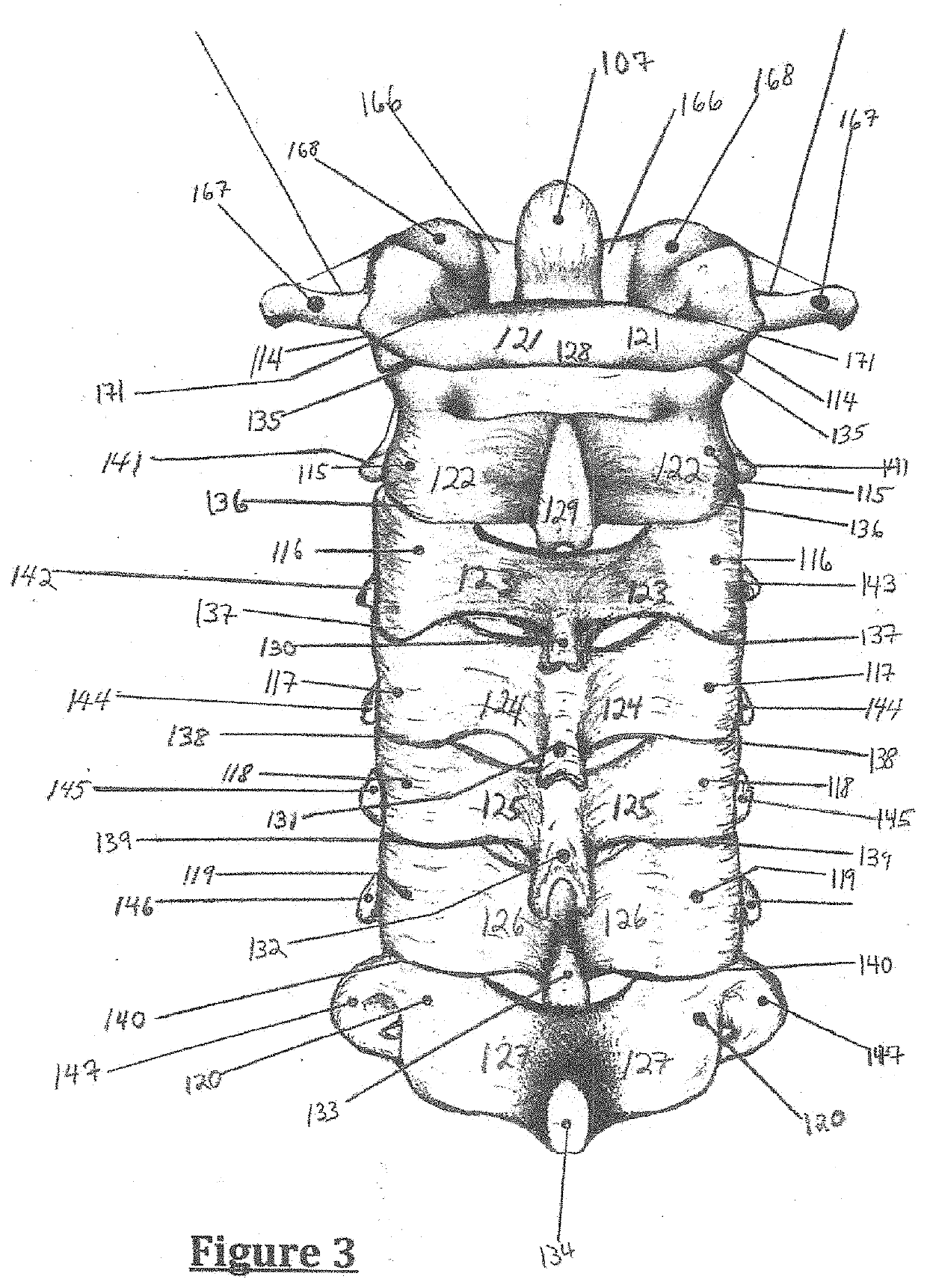Minimally intrusive cervicothoracic laminoplasty system
a cervicothoracic and minimally intrusive technology, applied in the field of minimally intrusive cervicothoracic laminoplasty system, can solve the problems of affecting the treatment effect, and often, but not always successful, and achieve the effect of relieving stenosis
- Summary
- Abstract
- Description
- Claims
- Application Information
AI Technical Summary
Benefits of technology
Problems solved by technology
Method used
Image
Examples
Embodiment Construction
[0076]The invention disclosed herein addresses these and other concerns by providing a device, known hereinafter as the Cervical Minimally Intrusive Laminoplasty (CMIL), as well as a series of implantation devices and methods for use. A principal feature in distinguishing this invention from previous art is that the CMIL does not utilize screws to be secured to the cervical / thoracic vertebrae; hence it is differentiated from much of the previous art. However, in contrast to art the art taught by Cathro, the CMIL is securely anchored to the target vertebrae. Also, in contrast to a number of systems previously proposed, the CMIL elevates a symmetric central spinolaminar arch. Further advantages include a more stable construct and providing the surgeon with the option of incorporating a multilevel construct including a multilevel fusion. As an adjunct to a multilevel fusion, this system offers an integrated fashion by which bone graft substrate can be strategically positioned, promotin...
PUM
 Login to View More
Login to View More Abstract
Description
Claims
Application Information
 Login to View More
Login to View More - R&D
- Intellectual Property
- Life Sciences
- Materials
- Tech Scout
- Unparalleled Data Quality
- Higher Quality Content
- 60% Fewer Hallucinations
Browse by: Latest US Patents, China's latest patents, Technical Efficacy Thesaurus, Application Domain, Technology Topic, Popular Technical Reports.
© 2025 PatSnap. All rights reserved.Legal|Privacy policy|Modern Slavery Act Transparency Statement|Sitemap|About US| Contact US: help@patsnap.com



